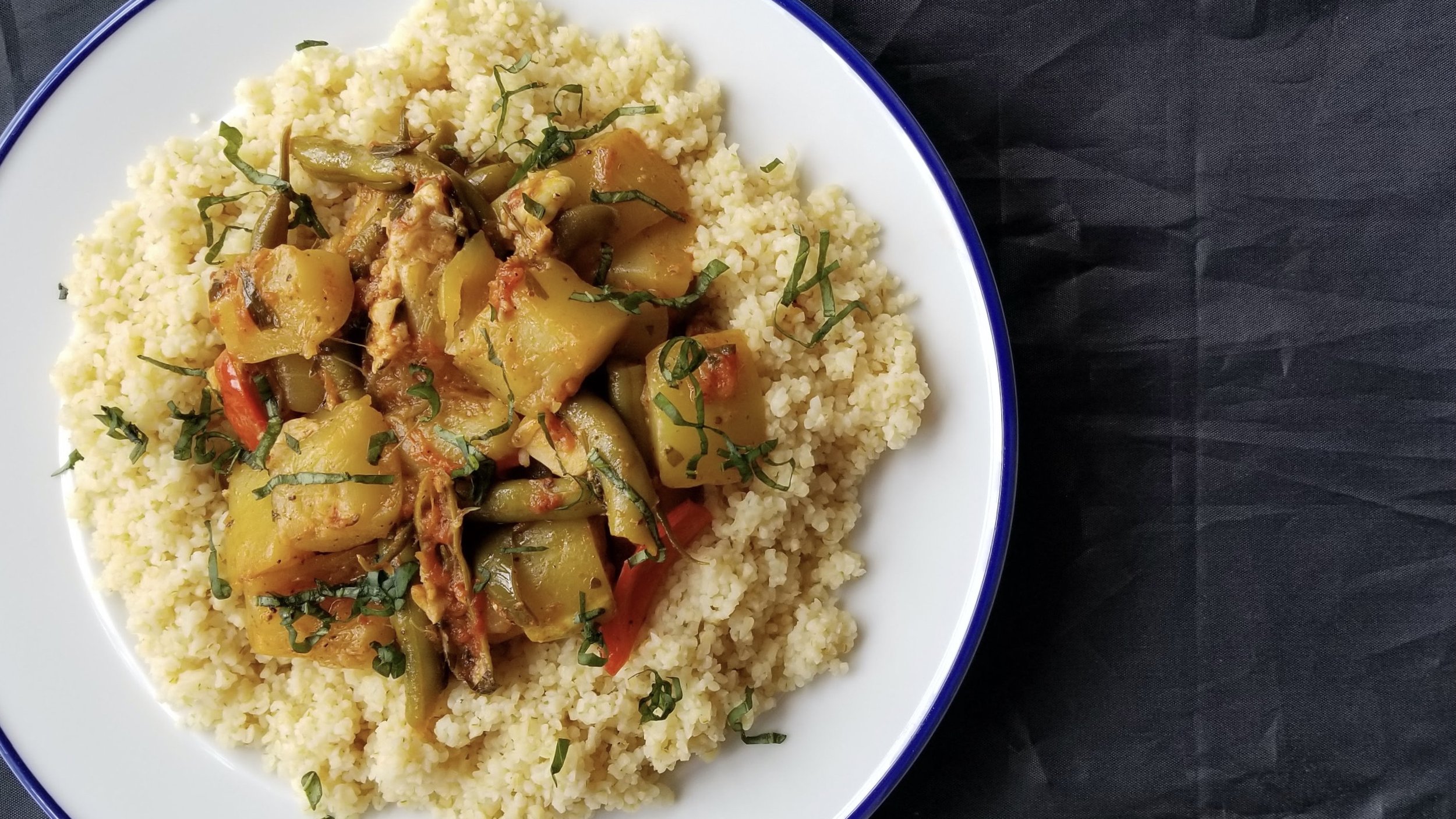GAD ZUKES!
One of the more popular recipes on this site, Long-Cooked Vegetables, is right here, right now. Go for it.
Over the past few years—always in September, ha—I have made this recipe six or seven times, tinkering with it each time, sharing it with friends who very well may have handed me its main ingredient: a zucchini as large as a bazooka launcher. As such, it remains perfect porridge for this gardening season’s end. I still spy such beasts about (as well as other felicitous elements for the recipe, such as beans long on the pole, or wrinkled peppers, sweet or hot). I am proud to say that the recipe, many times over, has been very well received.
At the outset, this recipe resulted from my thinking that the ginormous summer’s end vegetable cannot be merely a U.S. of A. problem. And of course, it is not; all lands grow gardens. The foreign places from which I took inspiration—Chile, Italy (of course, Italy; that’s where Zucchini got his name), Brooklyn—also grapple with old or overgrown vegetables.
So, in my fashion, this recipe is a melding of several different recipes, kickstarted by one of my favorite recipe writers, Samin Nosrat of the New York Times who wrote the coolest cookbook “Salt Fat Acid Heat.”
The first coupla go-arounds on this recipe, I would suggest that the anchovies were optional, getting people’s wariness for these misplaced eyebrows. However, I must insist that you use them; they add gobs of umami (and the taste of fish simply disappears; trust me). Vegans and vegetarians can get by with vegan fish sauce or other umami-adding seasonings that are vegan, perhaps one made from dried mushrooms.
Long-Cooked Vegetables, BSJ’s best way to deal with the garden’s bounty come summer’s end.
RECIPE: Long-Cooked Vegetables
Substitutions for (or, indeed, additions to) the zucchini, in total to amount to 2 pounds of vegetables: other summer squash (yellow squash, chayote, pattypan, crookneck); long beans, green beans, pole beans; sweet peppers, yellow or red, or additional more spicy-heat peppers, although of these latter, only a judicious amount.
Ingredients
1 very large zucchini (you want to end up with just over 2 pounds of trimmed flesh, seeded if necessary and with some, though not all, of the peel removed)
1 rounded tablespoon kosher or sea salt
6 tablespoons extra virgin olive oil
8 cloves garlic, peeled and halved
2-3 anchovy filets
(or 1 teaspoon anchovy paste)
3/4 teaspoon red pepper flakes (such as Urfa or Aleppo)
1 cup tomato sauce, or the same quantity of peeled ripe tomatoes, crushed
1/2 cup chopped flat-leaf parsley leaves
Healthy pinches of dried green herbs (oregano works, so do herbes de Provence or thyme; rosemary is a bit strong)
10 medium fresh basil leaves, torn
More flat-leaf parsley, chopped, or chiffonade basil, for garnish
Directions
Cut up the zucchini into 1-inch thick chunks. Place a colander in the sink, sprinkle the chunks with the salt, tossing to mix well. Let sit for at least 30 minutes, up to 1 hour. (Do not rinse.) Then, lay and roll the chunks over paper toweling to dry them somewhat.
(Continued below)
This is how you make a giant zucchini “sweat” for having the audacity to break into your kitchen.
In a large Dutch oven or similar pot over medium heat, add the olive oil, garlic, anchovies and red pepper, stirring. When just sizzling, lower the heat and cook until the garlic is golden and the anchovies have dissolved, 5-7 minutes. (Do not brown or burn the garlic.) Add the tomato sauce or tomatoes, parsley, herbs and basil, stirring.
Add the dried-off zucchini pieces and mix everything well, bringing the lot up to a good simmer. Cover the pot. Lower the burner to the lowest possible flame and cook for up to 2 hours, stirring every half hour in order to combine the flavors but not so vigorously as to break up the ever-softening vegetables, using a heat diffuser over the burner if it helps. The total time will depend on how gnarly the vegetables were at the beginning.
Remove the lid; turn up the heat. Let any obvious water boil off and stir the vegetables gently a time or two, until there’s a sauce of sorts coating the vegetable pieces, about 10 minutes.
Serve warm or at room or ambient temperature, garnished with the chopped flat-leaf parsley, alone or over anything you think works such as steamed brown or white rice, orzo pasta, or cooked bulghur wheat.


